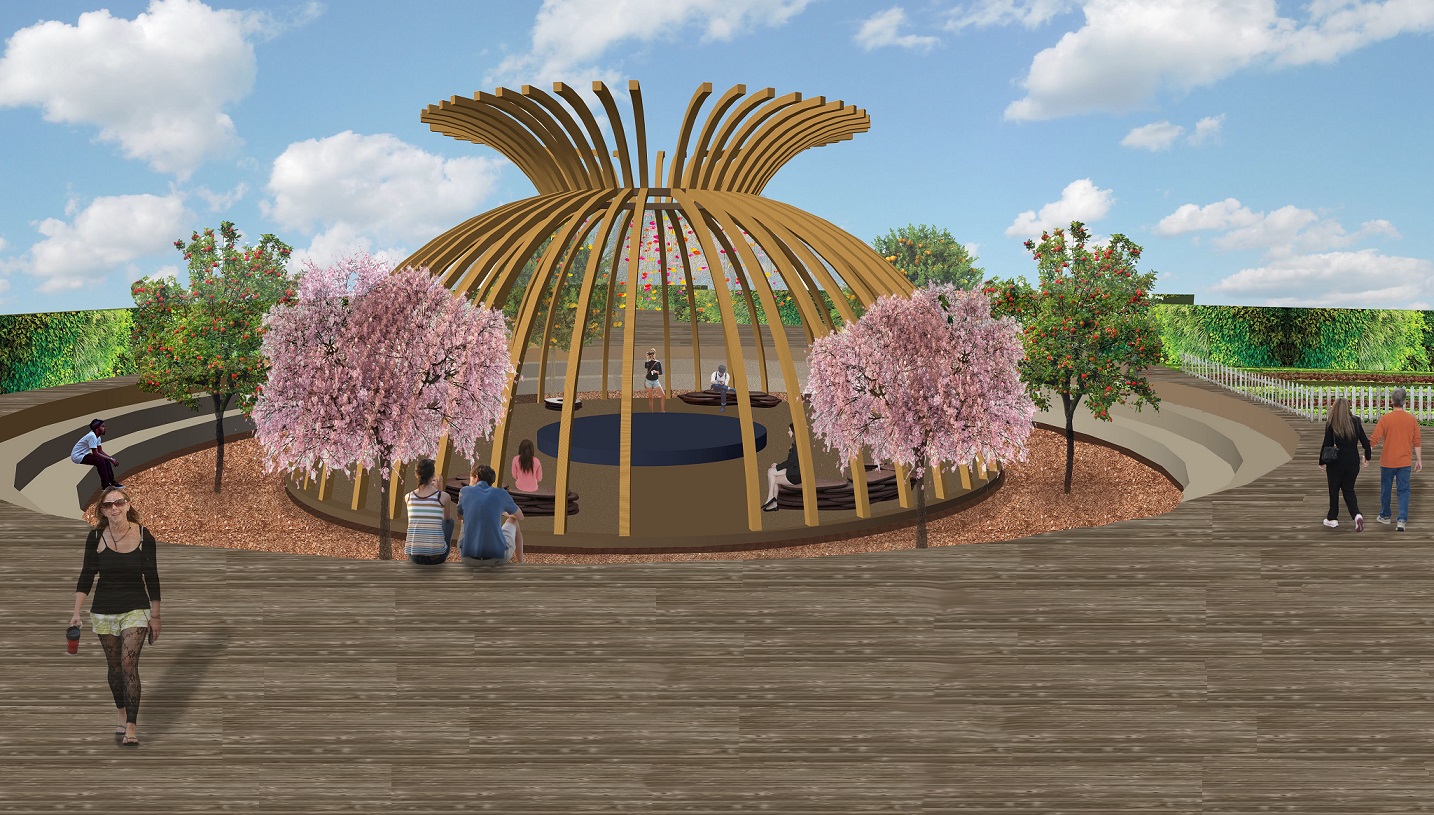As part of a Green Week initiative, BA (Hons) Design Management and Cultures students worked on an exciting project bringing City of London spaces to life using ‘biophilic’ design principles to connect people, nature and spaces.
Biophilic design is the attempt to consider the human sensory awareness of surroundings in design. It aims to remedy where practices have neglected, altered or eradicated the natural world and human connection.
Recognising that the human mind and body is immersed in a sensory environment, the project aimed to demonstrate how biophilic design can improve health and wellbeing through reconnecting people with the natural world using design solutions.
BA (Hons) Design Management and Cultures students worked collaboratively with BA (Hons) Design for Branded Spaces for this sustainability and wellbeing project, pooling the practices and expertise across both subject areas.
Paying attention to how historical London sits within its modern landscape, students worked collaboratively to identify a site in the City of London which displayed non-biophilic characteristics.

An example of a possible London landscape for investigation. Image by Lewis Bush.
BA (Hons) Design for Branded Spaces students were responsible for investigating and transforming a site within the built environment, whilst BA (Hons) Design Management and Cultures students supported by creating a brand identity and promoting the space to the general public.
Georgia Coward, Fareeha Aamer and Aino Haarala worked on the brand proposal for space transformation project, Käsi: the only rooftop farm that provides fresh food, where visitors can get back to nature, pick their own vegetables, engage in wellbeing exercises and take time out from urban London life.

Discussing the rationale behind naming the space Käsi, Georgia says, ‘the meaning of the word Käsi is hand, which we picked because we wanted to channel the idea of community which is most associated with visuals of hands. Hands also relate to the idea of everything being handmade and our desire for visitors to participate and ‘lend a hand’ in cultivating our space.’

Alongside scoping out the mission, values, tone of voice, personality, target audience, colour palette and font suite for Käsi, students also considered promotional extensions of the brand including experiential marketing, way-finding visuals, eco-friendly packaging and a Käsi waste disposal app.

Calvin England, Nida Zamir, Stella Adamidou and Zhuoyi Zhang worked on the branding for Cowper’s Court: a ‘biophilic wonderland’ proposed to offer an escape from the hard concrete edges of modern architecture for arts and culture lovers living and working nearby.



All BA (Hons) Design Management and Cultures students involved in this project had to:
- Deliver an 8-10 minute pitch presentation of the branding project
- Provide insight into the process as a group (mind maps, research, sketches)
- Discuss how the project was managed
- Discuss the branding elements (typeface, slogan, copy, colours)
- Produce mock ups of the branding on promotional materials and visuals within the space
- A visitor pamphlet for the space
- A 3-4 minute film documenting the project process
Read about the BA (Hons) Design Management and Cultures course.
Read about the BA (Hons) Design for Branded Spaces course.
Hear more about the BA (Hons) Spatial Design aspects of this project via the course blog.

